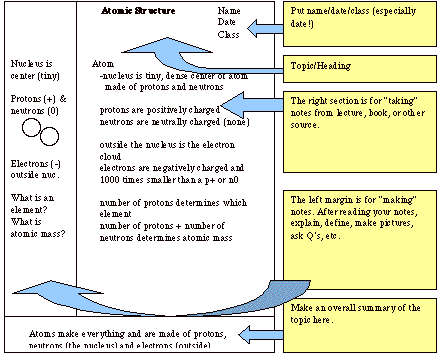
Here is an outline of Focused
Note Taking for more details and an Example
of Cornell/Focused Notes:
For full credit, you must have all of the following;
Dates (on every page)
Notes
(quantity and quality of all information) including...
Vocabulary
(all required
terms)
Reflection (on every page)
Summary (on each page and
ideally, a main summary at the end)
Evaluation (for
higher level [3-4] credit)
Grading:
Level 4 - E:
Evaluation/thoughts/higher order connecting of ideas
Level 3 - CO/S: Content Objective/Summaries
Level 2 - V/R: Vocabulary/Reflection
Level 1 - Less than basic (not including all of the
Level 2)


